Did you know there’s a tax break that encourages innovation and saves you money? The R&D tax credit lets businesses cut their taxes by investing in new ideas. But what is it, and who can get this benefit? We’ll look into the R&D tax credit and show you how your company can use it.
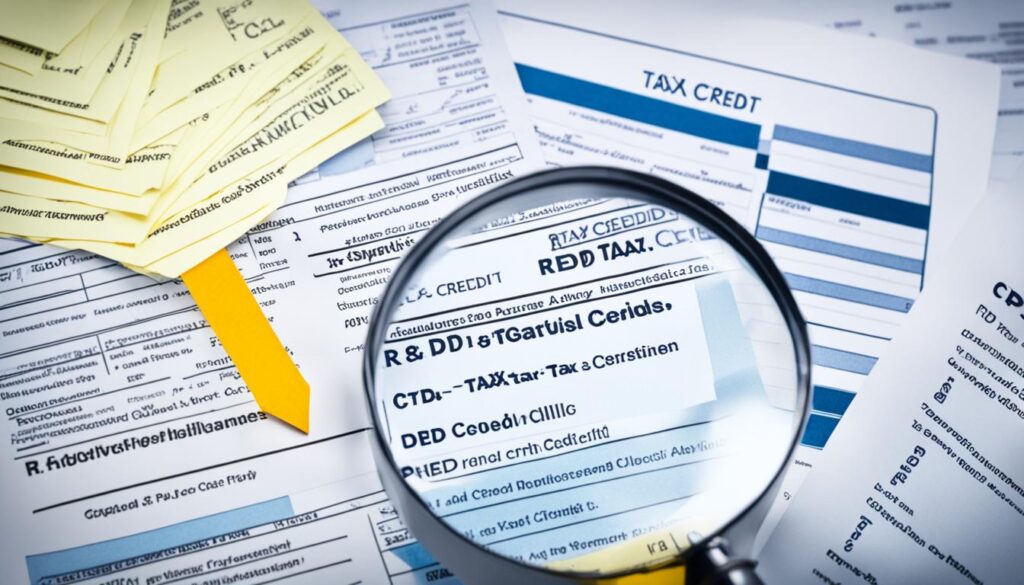
Key Takeaways:
- The R&D tax credit provides businesses with a dollar-for-dollar reduction in tax liability for qualifying research and development expenses.
- Any organization that engages in activities to develop new or improved products, software, techniques, or inventions may be eligible for the credit.
- To claim the credit, businesses need to file IRS Form 6765 and provide documentation to identify qualifying expenses.
- The R&D tax credit can be applied against federal income tax liability and may also be claimed against payroll taxes.
- The credit allows businesses to reduce their tax liability while still deducting expenses related to research and development.
What is the Federal Research and Development (R&D) Tax Credit?
The federal R&D tax credit is a great way for businesses to lower their taxes. It rewards companies for creating or improving products, processes, or software. This incentive boosts economic growth and innovation.
Under Section 41 of the Internal Revenue Code, businesses can get back some of their R&D costs. This means more money for future innovations. It helps businesses grow by making it easier to invest in new projects.
Did you know? The R&D tax credit doesn’t just lower taxes now. It can also be saved and used for up to 20 years.
Companies can save a lot on taxes through this credit for eligible expenses. These might include efforts to design or improve products or processes. This allows companies to put more into R&D. It gives them a leg up on the competition.
Benefits of the Federal Research and Development Tax Credit
This tax credit brings many benefits to companies:
- It greatly reduces tax bills, saving companies money.
- It encourages spending on domestic R&D, keeping investment in the U.S.
- It supports innovation. This helps develop new products and technologies, promoting growth and competitiveness.
This tax credit is a key tool for companies wanting more innovation while cutting taxes. By using this credit well, businesses can boost their R&D work. This keeps them ahead in their industry.
Who Qualifies for R&D Tax Credits?
R&D tax credits help organizations that work on new or better products, methods, software, techniques, formulas, or inventions. Thanks to the Protecting Americans from Tax Hikes (PATH) Act of 2015, more small and medium businesses can now benefit from these credits.
Companies focusing on innovation might be eligible for these tax credits. If you’re working on new solutions, making your products better, enhancing manufacturing, developing software, or finding new formulas, you could be in luck.
R&D tax credits aim to motivate companies to spend on research and development. This effort boosts growth and innovation across fields. It helps businesses explore new possibilities, spurring technological advancements and economic development.
“The accessibility of R&D tax credits has been broadened by the Protecting Americans from Tax Hikes (PATH) Act of 2015, enabling many small-to-midsize businesses to optimize their eligibility for these credits.”
Whether you’re in tech creating innovative software or manufacturing looking to better your processes, if you’re making something new or improved, you could get R&D tax credits.
It’s vital for companies to review their work and find activities that fit the IRS guidelines. Taking full advantage of R&D tax credits can offer major tax breaks, helping your business grow and stay ahead in the innovation game.
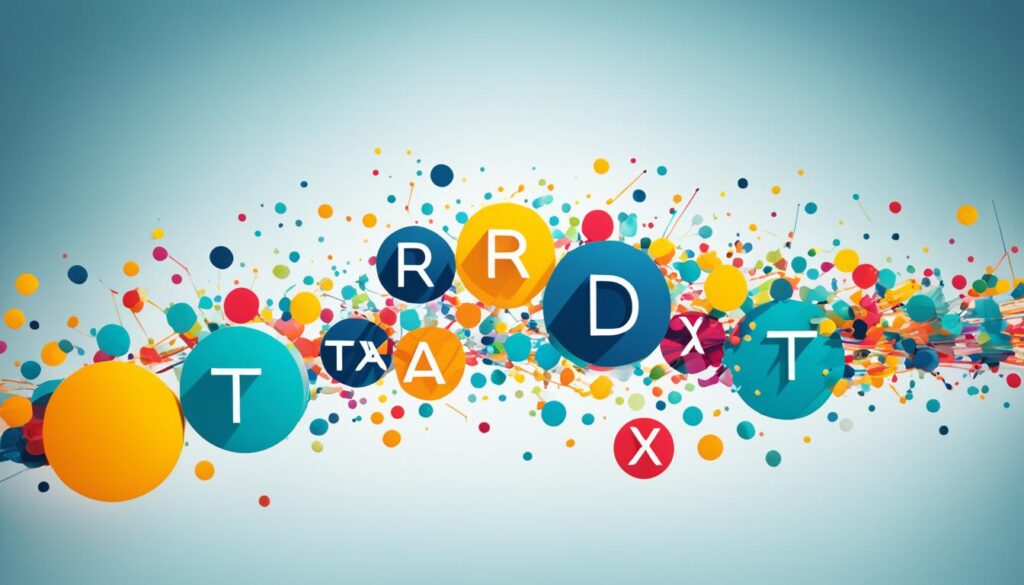
| Qualifying Organizations | Qualifying Activities |
|---|---|
| Small-to-midsize businesses | Developing new or improved products |
| Startups | Improving manufacturing processes |
| Technology companies | Creating innovative software |
| Manufacturing companies | Discovering new formulas |
Using R&D tax credits gives companies an edge. They can put tax savings back into more research and development. This push keeps them leading in the competitive and fast-moving business world.
How to Claim R&D Tax Credits
To get R&D tax credits, start by filing IRS Form 6765. This form, also known as the Credit for Increasing Research Activities, is crucial. Make sure to fill it out carefully and send it to the IRS.
On IRS Form 6765, detail your expenses that qualify. These might include wages, supplies, and costs for design and testing that follow the rules in Internal Revenue Code Section 41.
Backing up your claim with solid proof is key. The IRS needs to see that your expenses truly fit the bill. You might need financial records, conversations with employees, or technical details about your project.
The documentation provided should clearly demonstrate that the expenses claimed are directly related to qualifying research and development activities, as defined by the IRS.
Complete IRS Form 6765 carefully, and add in all required documents. Getting advice from experts in R&D tax credits is also a wise move. They can help make sure everything is done right.
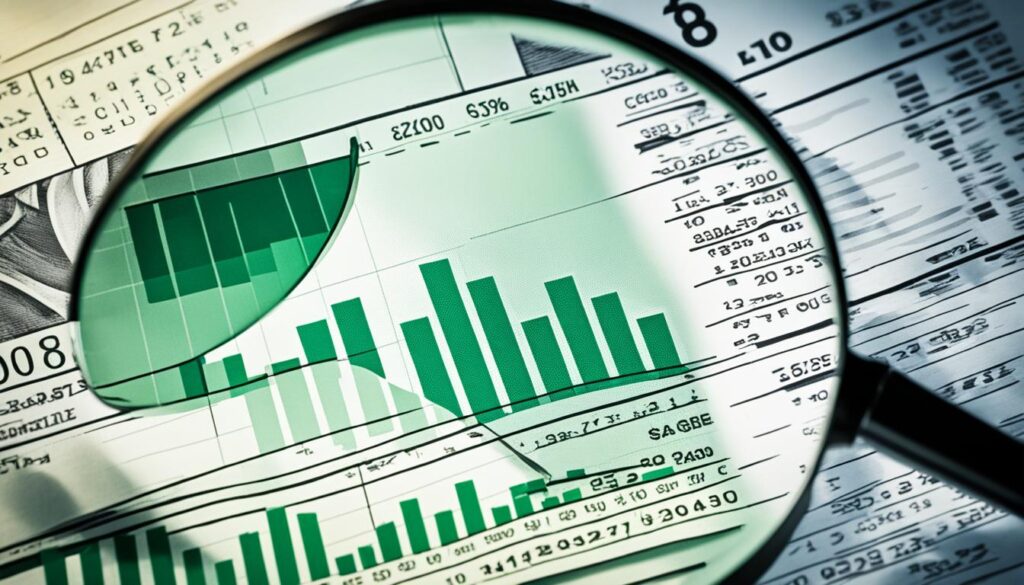
| Key Steps to Claiming R&D Tax Credits |
|---|
| 1. Fill out IRS Form 6765, Credit for Increasing Research Activities. |
| 2. Identify and document qualifying expenses related to research and development activities. |
| 3. Provide supporting documentation that demonstrates how the expenses meet the requirements outlined in Internal Revenue Code Section 41. |
| 4. Consult with tax advisors or professionals to ensure accuracy and compliance. |
How to Fill Out Form 6765
Completing Form 6765 is crucial for businesses documenting their Research and Development (R&D) costs. It helps claim the R&D tax credit, boosting tax savings. Let’s explore Form 6765’s four sections for precise reporting and a smooth filing process.
Section A: Regular Credit
Here, firms claim the regular credit for R&D work. You need to detail your qualifying costs. These include expenses on product development, improvements, or creating new processes or software. It’s key for reducing tax bills.
Section B: Alternative Simplified Credit (ASC)
Section B lets companies pick the alternative simplified credit for the R&D tax credit. This choice simplifies the calculation, possibly saving time. Evaluate both methods to see which maximizes your tax advantage.
Section C: Additional Forms and Schedules
Your business type and specifics might require extra forms and schedules for your R&D credit claim. Section C covers this, ensuring detailed reporting. For guidance on additional documentation, check IRS rules or talk to a tax expert.
Section D: Qualified Small Businesses (QSBs) and Payroll Tax Election
QSBs looking to apply the R&D credit to payroll taxes should fill out Section D. This option benefits eligible businesses. To see if you qualify as a QSB, consult IRS guidelines or a tax professional.

Form 6765 lets businesses accurately report R&D expenses for the R&D tax credit. Fill out each part carefully, providing all needed details. This ensures you get the full tax benefit. For further help and compliance with IRS rules, seek a tax professional’s advice.
How Does the R&D Tax Credit Work?
The R&D tax credit lets businesses lower their federal income tax. They do this by applying a part of their yearly R&D spending. Usually, firms can use 6% to 8% of these costs to reduce their taxes. This leads to big tax savings.
To get the R&D tax credit, companies must do certain tasks that aid in growth and innovation. These tasks can include:
- Developing new or innovative products
- Improving existing products or processes
- Hiring scientists, designers, or engineers engaged in R&D activities
- Creating intellectual property
- Investing in contract research or cloud hosting services
- Payroll expenses related to R&D activities
- And more
By engaging in these tasks and making related expenses, companies can innovate. At the same time, they enjoy the benefit of the R&D tax credit. This helps reduce their tax payments.
Moreover, the R&D tax credit provides more tax relief. It allows businesses to claim credits against their payroll taxes. To be eligible, the company’s gross receipts and operation years are considered.
Thus, the R&D tax credit encourages innovation. It is also a useful tax planning tool. Companies can use it to increase their tax savings while investing in research and development.
Example: The Impact of the R&D Tax Credit
“ABC Technologies put a lot of money into creating a new AI product. The R&D tax credit helped them decrease their federal tax payments. This enabled ABC Technologies to spend more on research and development. They could innovate more and stay ahead in the market.”
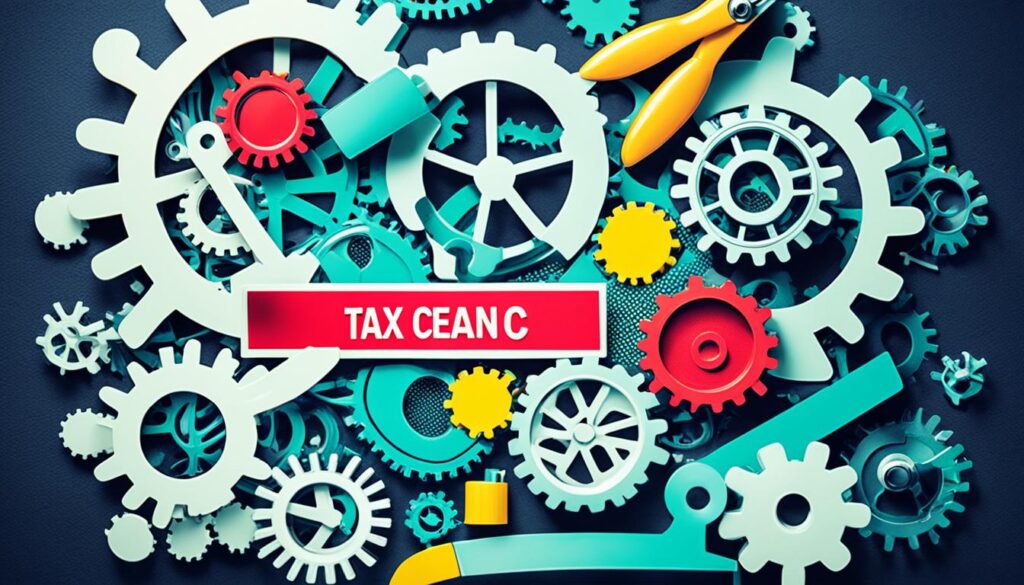
| Qualifying Activities | Annual Qualifying Expenses | Tax Credit Applied |
|---|---|---|
| Create new or innovative products | $500,000 | $40,000 (8% of qualifying expenses) |
| Hire scientists, designers, and engineers | $200,000 | $12,000 (6% of qualifying expenses) |
| Invest in contract research and cloud hosting | $300,000 | $24,000 (8% of qualifying expenses) |
| Total Qualifying Expenses | $1,000,000 | |
| Total Tax Credit Applied | $76,000 | |
ABC Technologies had $1,000,000 in qualifying R&D costs in this example. They applied for an 8% tax credit on these expenses. This reduced their federal tax by $76,000. They saved a lot on their taxes.
What Qualifies as Research and Development?
Research and development (R&D) activities are judged by the IRS’s four-part test. This test checks if they qualify for the R&D tax credit.
- Permitted Purpose: The R&D work must aim to better a product’s function, quality, reliability, or performance.
- Technological in Nature: It should be based in hard or computer sciences. This includes areas like engineering and biology.
- Elimination of Uncertainty: The R&D must try to solve a project’s unknowns. The goal is to clear any doubts or solve problems.
- Process of Experimentation: There needs to be a trial and error approach. Companies may evaluate alternatives or use formal testing methods.
If your activities pass these criteria, they might be eligible for the R&D tax credit. Make sure to clearly show how your work fits these rules. This will help when you claim the credit.
Evidence of R&D Activities
“Companies that have an innovative approach to problem-solving and invest in scientific research and experimentation can benefit greatly from the R&D tax credit.”
To claim the R&D tax credit, you need to show proof. This includes financial and business records, as well as technical documents. The evidence must prove your work meets the test’s criteria.
| Required Documentation for R&D Tax Credit Claim | Examples |
|---|---|
| Project Records | Project plans, research summaries, lab notebooks |
| Meeting Records | Meeting minutes, agendas, attendance logs |
| Design Records | Design drawings, blueprints, prototypes |
| Testing and Experimentation Records | Testing protocols, test reports, data analysis |
| Technical Specifications | Technical documents, specifications, formulas |
| Payroll and Job Titles | Timesheets, W-2 forms, job descriptions |
Having detailed and accurate records proves your R&D tax credit claim. It also shows the innovation and tech progress in your activities.

What Does R&D Tax Credit Mean?
The R&D tax credit is a boon for companies focusing on new research and development. It is also a general business tax credit. This means companies can lower their taxes and still write off research costs.
This tax credit aims to encourage companies to invest in new ideas and growth. By doing so, it helps boost innovation and the economy. It shows that research and development are key to new technology and improving products.
“The R&D tax credit provides businesses with the opportunity to support innovative initiatives without compromising their financial stability.”
Qualifying businesses can put more into research, leading to new tech and top products. This tax credit boosts innovation and helps create jobs. Companies are encouraged to hire experts like scientists and engineers.
The R&D tax credit lets companies focus on tech advancement without hurting their finances. With lower taxes, they have more to spend on research. This pushes innovation and helps the business grow.
R&D Tax Credit Benefits:
- Reduction of tax liability
- Incentive for innovation and growth
- Support for research and development initiatives
- Ability to deduct qualifying expenses
- Increased resources for technological advancements
- Job creation opportunities
R&D Tax Credit Eligibility:
Various industries can qualify for the R&D tax credit. This includes those in product development, software design, and more. To see if they qualify, businesses should talk to tax experts. These professionals can check their activities against the eligibility requirements.
How Far Back Can You Claim R&D Tax Credits?
Businesses can file amended returns to claim R&D tax credits for past years. Usually, they can go back up to three years. But if the company had losses, they might have more time to claim.
If your business did research and development before but didn’t claim R&D tax credits, you’re still in luck. By filing amended returns, you can ask for those credits later and lower your taxes. This could really help your company’s money situation and support new growth.
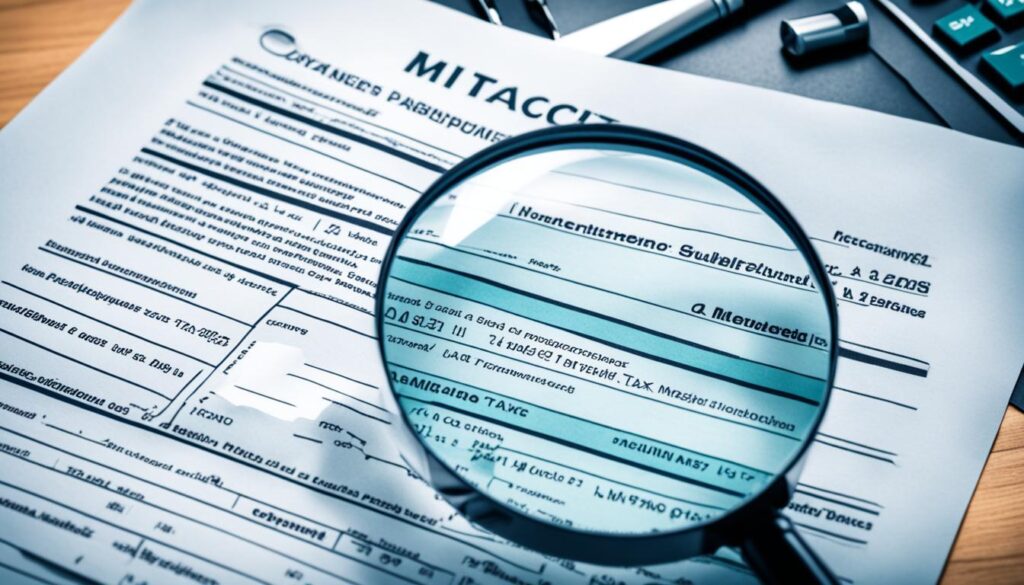
Amended returns let companies fix mistakes or add missed information to past tax returns. They are a way to update financial details and claim missed tax benefits. For R&D tax credits, this means asking for credit for past expenses. This can bring in money that can go back into your company’s research.
The rules for amended returns and R&D tax credits can differ by location. Talking to a tax advisor or CPA is a smart move. They can make sure you follow the rules and get as much credit as possible.
Using amended returns to claim R&D tax credits can help businesses financially. It can also support their efforts to innovate and grow.
Key Takeaways:
- Businesses can claim R&D tax credits retroactively by filing amended returns for open tax years.
- The typical time frame for claiming these credits is up to three years.
- If a company incurred losses during the period, the window for claiming R&D tax credits may be longer.
- Amended returns allow businesses to correct errors or omissions in previously filed tax returns.
- Consulting with a tax advisor or CPA can help navigate the specific rules and regulations for claiming R&D tax credits.
Is R&D Tax Credit Taxable Income?
The R&D tax credit gives businesses a special edge with their federal taxes. It’s not like other tax breaks that add to your taxable income. This credit lets businesses lower their taxable income by the credit amount they get.
Imagine a business earns $100,000 and gets a $10,000 R&D credit. They don’t count the $10,000 as income. Instead, they subtract it. So, their taxable income drops to $90,000.
This way of reducing taxes by R&D expenses helps businesses that innovate. It boosts their tax savings. At the same time, it spurs more investment in new research and development.
Do R&D Tax Credits Expire?
The Protecting Americans from Tax Hikes (PATH) Act of 2015 made R&D tax credits permanent. This is under Section 41 of the Internal Revenue Code. Now, businesses can benefit from these credits for a long time.
If a business doesn’t owe taxes in a year, it can save its credits for up to 20 years. This way, they can use the credits later, even if they have no tax liability now. It helps businesses lower their taxes in the future and save more money.

| Benefit | Explanation |
|---|---|
| Permanent Extension | The PATH Act of 2015 made the R&D tax credits a permanent part of the tax code, providing businesses with long-term access to these incentives. |
| Carry Forward | Unused credits can be carried forward for up to 20 years, allowing businesses to utilize them in future tax years and potentially reduce their tax liabilities. |
| Reduced Tax Liability | R&D tax credits can help businesses reduce their tax liabilities, providing them with valuable tax savings that can be reinvested in research and development activities. |
| Support for Innovation | By incentivizing research and development, the R&D tax credits support and encourage innovation within businesses of all sizes and industries. |
How Can ADP Help with Tax Credit Compliance?
ADP knows the struggles businesses have with tax credit compliance. Laws change often, making it hard to keep up. That’s where ADP steps in.
They have the know-how, tech, and resources to simplify claiming tax credits. ADP keeps up with new laws and works closely with government bodies. This gives businesses the latest info and advice.
ADP also offers audit support and teams up with CPAs for compliance. They give safe access to payroll data for clients. Plus, they may even share revenue to help with consulting costs. This makes ADP a smart choice for companies wanting to boost their returns.